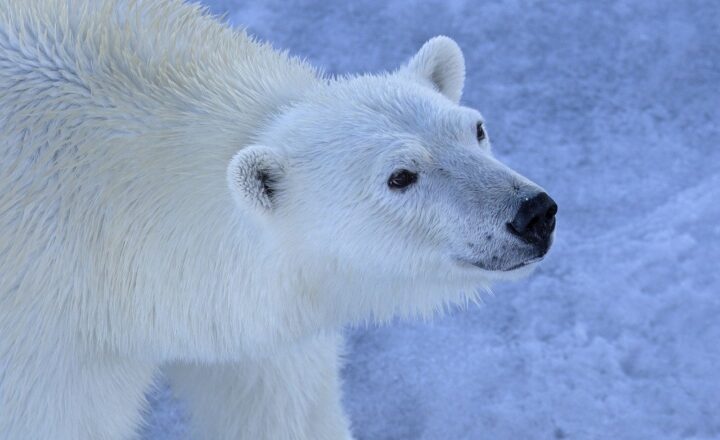A Guide to Protecting Local Wildlife Near Rivers and Lakes
November 15, 2024

Natural bodies of water like rivers and lakes are vital ecosystems that support diverse wildlife populations. They provide essential habitats for various species, from fish and amphibians to birds and mammals. However, these vital ecosystems face numerous threats, including pollution, habitat destruction, and climate change. This guide aims to educate you on the importance of protecting local wildlife near rivers and lakes and offers actionable steps you can take to make a difference.
1. Understanding the Importance of Freshwater Ecosystems
Freshwater ecosystems are some of the most productive environments on Earth, offering numerous ecological services that benefit both wildlife and human communities. Here are some key reasons why protecting rivers and lakes is essential:
- Biodiversity: Freshwater habitats support a significant portion of the world’s biodiversity. Many species rely on aquatic environments for breeding, feeding, and shelter. For instance, about 40% of all fish species live in freshwater, and they are crucial for maintaining the balance of their ecosystems.
- Water Quality: Healthy river and lake ecosystems help improve water quality by filtering pollutants. Vegetation along shorelines absorbs nutrients and slows down soil erosion, preventing sediment from entering the water.
- Climate Regulation: Freshwater bodies play a significant role in climate regulation by storing carbon and regulating temperature.
- Community Resources: Local communities often rely on rivers and lakes for freshwater supply, recreational activities, and economic opportunities like fishing and tourism. Protecting these areas helps sustain these vital resources for future generations.
2. Major Threats to Wildlife Near Rivers and Lakes
While freshwater ecosystems are incredibly vital, they face multiple threats:
- Pollution: Runoff from agriculture, industrial waste, plastic waste, and untreated sewage can contaminate water sources, harming fish and wildlife and degrading their habitats.
- Habitat Destruction: Urban development, dam construction, and land reclamation disrupt natural habitats, diminishing spaces where wildlife can thrive.
- Invasive Species: The introduction of non-native species can disrupt local ecosystems, competing with native species for resources and altering habitat structures.
- Climate Change: Rising temperatures and changing precipitation patterns impact water levels, temperatures, and food availability, placing stress on aquatic and terrestrial wildlife. Changes can also lead to increased algal blooms, which can threaten water quality and fish populations.
3. Ways to Protect Local Wildlife Near Rivers and Lakes
Protecting local wildlife and their habitats requires collective efforts and a commitment to sustainable practices. Here are several actionable steps you can take:
3.1. Advocate for Clean Water Policies
Engage in advocacy efforts to support legislation that aims to protect water quality and restrict pollution. Involve your community in campaigns focused on sustainable agricultural practices and pollution control.
3.2. Participate in Community Clean-Up Days
Join local organizations in cleanup events near rivers and lakes. Removing litter and debris helps improve the habitat for wildlife and keeps contaminants out of waterways.
3.3. Create Native Plant Gardens
Planting native vegetation along shorelines can create vital habitats for wildlife. Native plants provide food and shelter for local wildlife while enhancing the ecosystem’s resilience against climate change and invasive species.
3.4. Report and Reduce Pollution
If you notice pollution or hazardous materials entering rivers or lakes, report it to local authorities immediately. Additionally, adopt sustainable practices at home, such as reducing plastic use and using eco-friendly products.
3.5. Support Wildlife Conservation Organizations
Support local and national organizations dedicated to protecting wildlife and freshwater ecosystems. Volunteer for conservation programs or donate to their efforts to restore habitats and protect vulnerable species.
3.6. Educate the Community
Raise awareness about the importance of protecting wildlife near rivers and lakes. Organize workshops, seminars, or social media campaigns promoting conservation efforts and educating the public about the threats to these ecosystems.
4. Engaging in Regenerative Practices
Engaging in regenerative practices not only benefits wildlife but also enhances the quality of our water and soil. Here are some practices to consider:
- Sustainable Agriculture: Promote farming practices that protect water quality, such as crop rotation, cover cropping, and organic farming. Encourage local farmers to adopt methods that minimize pesticide and fertilizer runoff into waterways.
- Riparian Buffer Restoration: Restore riparian buffers—vegetated areas near rivers and lakes. These buffers filter pollutants, stabilize banks, and provide habitat for wildlife. Volunteering in restoration projects can significantly contribute to wildlife protection.
- Rainwater Harvesting: Implement rainwater harvesting systems to reduce runoff and increase water conservation efforts. Use the collected water for gardening and other activities rather than relying on treated water.
5. Conclusion
Protecting local wildlife near rivers and lakes is not just an act of kindness; it’s an essential effort to sustain our planet’s ecosystems. By understanding the importance of freshwater ecosystems and recognizing the threats they face, we can take meaningful actions to protect them. Through community engagement, advocacy, and sustainable practices, individuals can play a crucial role in preserving these vital habitats for generations to come. Let us be champions for our local wildlife, ensuring that rivers and lakes remain vibrant ecosystems teeming with life.
Take Action Today!
The journey to protecting local wildlife starts with each of us. Educate yourself, spread awareness, and connect with your community to effect change. Together, we can safeguard our rivers and lakes and the precious wildlife that relies on them.







